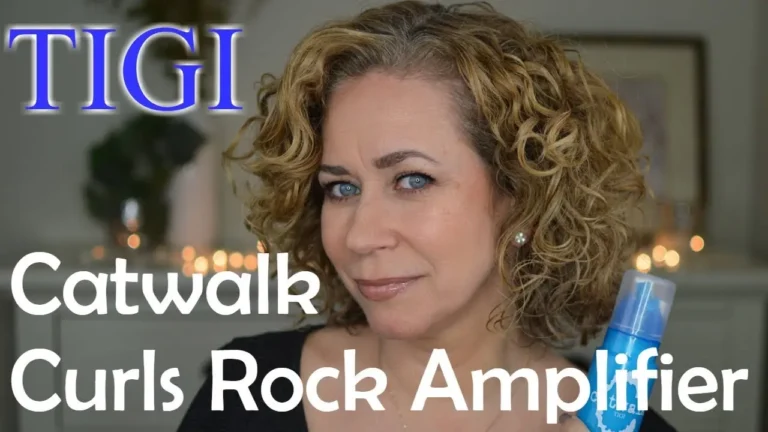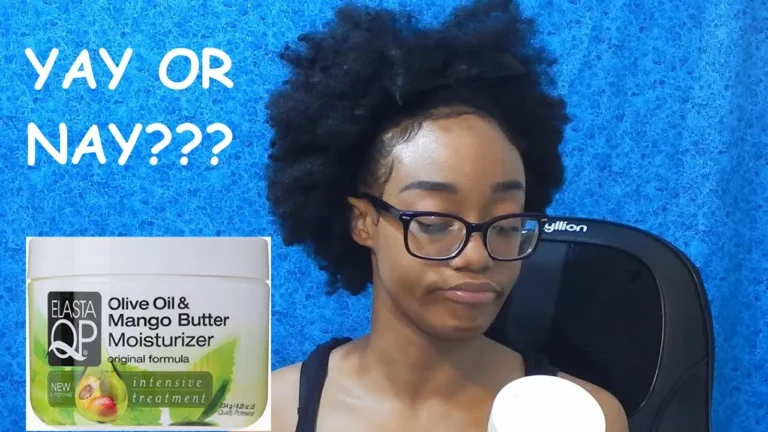
Does a durag cause hair Loss?(Explained)
It’s a common misconception that wearing your hair in a durag will cause hair loss or slow down the growth of your hair. In fact, they’re usually made of soft materials that won’t snag or break our hair and can be tied as tightly or loosely as you’d like.
While there is no direct link between the two, they can still cause hair loss if misused.
Durags serve many purposes when it comes to textured hair care. They work great as a way to start waves, flatten styles, and protect your hair from the outside elements.
Durags are on trend right now and are becoming one of the most popular fashion statements among Black folks. There is an unfortunate rumor, though, that says that wearing a durag for too long can cause hair loss. This is just one of many beliefs about durags over time that have been disproven.
If you’re wondering whether these rumors could be true, we will put this to a thorough test. In this article, we will examine whether the durags are capable of causing hair loss:
If you’re experiencing hair loss, it could be as a result of not wearing your durag correctly or for too long. These are common causes for many hair loss sufferers.
How Improper Durag Use and Hair Neglect Cause Hair Loss
A durag is typically worn in multiple ways, so before you buy one, we wanted to tell you about how it can be worn and then share some helpful tips for wearing it properly.
A durag should always stay securely in place and should never be twisted or rolled up, to ensure it doesn’t cause hair loss. They should also be flat all around to maintain comfort & reduce any unwanted heat leakage.
Once that’s done, start by tying the two strings of hair at the back of your head together. Then tie one string across the back then on top of your head and then tie it to secure it.
Wearing a Durag Too Tightly
One of the downsides about wearing a tight-fitting, durag is that it can lead to hair loss. If you don’t want to experience this problem, try making sure your head wrap isn’t wrapped too tightly.
Follicular Irritation Impeding Hair Growth
Hair needs oxygen to grow. If you wear a too-tight durag, you trap air in it and your scalp becomes suffocated. This can lead to even more problems such as hair loss because the follicles aren’t able to supply themselves with oxygen.
You might experience a lot of discomfort from the redness and inflammation that could result from frequent scratching. You may also damage your hair follicles and even develop an infection that causes you to lose hair.
Scalp Circulation Issues
If your durag leaves an indentation on your scalp or if it makes your scalp feel numb, you might experience a loss of blood circulation. It’s important that you loosen up fabric or take it off entirely if you want to maintain the health of your hairline.
Traction Alopecia Causing Receding Hairlines and Other Harmful Effects
Traction alopecia is hair loss from repetitive or excessive stress, most commonly on the scalp. It can also be caused by too much manipulation of your hair or placement. You can find out ways to prevent it, for example with the right styling methods & avoiding excessive pressure on your follicles
Traction alopecia is often experienced by those who wear their hair in tight braids or weaves, or have an ill-fitting durag.
You may notice more hair loss around the perimeter of your head, which could be due to traction alopecia. Keep in mind that there are many factors that can cause this, so it might not always be from wearing a durag.
If you’ve experienced this side effect, we recommend you work with a hair loss specialist about your particular hair care needs.
Neglecting Your Hair
Many people who use durags for their hair tend to wear them for a few days or weeks at a time, but this is not the best-case scenario for your hair’s health. You should always implement healthy haircare habits and continue doing what you’re doing in order to maintain the balance of your tresses.
Wearing a durag is not recommended when you aren’t washing your hair often and putting in the effort to condition it. If you experience hair loss, this could be due a lack of care or bad conditioning techniques.
Hair that’s not properly nourished is more prone to breakage and dryness, which can then be a source of stress. A bad hair day can happen even when you eat nutritious food, sleep well and hydrate with plenty of water. Plus, healthy hair also looks better than armfuls of frizzies.
What Does a Durag Do to Hair?
Durags are not only a fashion statement, but they provide some benefits too.
Maintains Waves
Waves need a lot of attention to maintain and are challenging, but with the help of a durag you will be able to keep them groomed. With constant care, they can look great at any event!
When you don’t have time to groom your waves every day, a durag is a great option for adding some texture instead. They also help keep the original direction of curls and waves so you don’t need to make adjustments all the time.
Keeps The Hair Clean
Durags work by sticking firmly to your hair, preventing dirt and grime from getting in and ruining your hairstyle. They’re helpful when working out, in traffic, on a bike during hot weather, or anytime you need a sports-friendly headband that’s still stylish.
Sun Protection
Protecting your hair from sun exposure is beneficial in order to ensure it doesn’t get damaged. A light-colored durag can prevent sunburn; buying dark-colored ones means that they absorb heat and can lead to heat stroke if worn for prolonged periods of time.
Straightens Hair
Durags are a must-have for anyone experiencing difficult waves or flat-ironing their hair. They keep the hair straighter and provide a sleek finish without taking too much time to do.
Other Benefits Of Wearing A Durag
- To prevent tangling: Sometimes your hair starts to tangle during the night. Wearing a durag prevents this because it keeps your brushed hair from forming knots.
- To prevent frizzes on curly hair: Hair gets frizzy if it is not wrapped up at night. Durags are a type of head covering that keeps hair intact and prevents curly hair from getting frizzy during sleep.
- Wrapped after treatment: A durag helps your hair get the best treatment possible. Plus, it helps prevent stains in your sheets and pillows during the night.
How Does a Durag Cause Hair Loss?
Durags are becoming increasingly popular & provide a lot of benefits. However, they can cause problems in the long term.
They typically clog the hair pores, weaken hair follicles, & even cause hair loss. It is important to keep in mind the possible side effects in order to make sure you’re not causing damage unintentionally.
Sometimes causing habitual traction alopecia can make your hair go bald prematurely. This condition is caused when a person’s scalp is under too much strain & hair follicles will be damaged leading to thinning hairline
When you wear a particular hairstyle that features braids, ponytails, and tight headwear like the durag the risk for this condition is significantly increased.
Durags don’t provide the best protection and can interrupt cell reproduction. If you’re wearing a durag, talk to your stylist to create a more secure fit.
- Redness, ulcers, and itchy scalp
- Wide hair parting
- Patches of broken or thin hair where the hair is under strain
- Receding hairline around the temples, forehead, or nape
- Patches of scarred and shiny skin in more severe cases
A durag can also worsen some scalp conditions that cause hair loss. People with alopecia areata, for example, can make the situation worse when they wear a durag. This is a condition that causes the cells in your immune system to attack hair follicles, resulting in hair loss.
When the immune system is triggered, it invades the hair follicles and largely shuts down hair production. This leads to a variety of scalp conditions, including alopecia areata. The use of a durag seems like a good idea, but eventually it can get irritating or push the hair behind your head and make it thin as well.
Ways to Avoid Durag-induced Traction Alopecia
People with traction alopecia are commonly made up of a few people. Durag-induced traction alopecia can be avoided by wearing your durag too tight.
Here are other ways to prevent the condition:
- Avoid wrapping your durag too tight around the base of the head. Leave adequate room for movement
- Durags made of silk and satin are some of the most durable, because they are able to retain moisture well. Velvet-lined durags provide an extra firm hold on your head, so you can feel comfortable while wearing them.
- Wash your hair every day to remove dirt, sweat and dust. By doing so, you ensure that the hair is clean when wearing a durag. If you don’t wash your hair often, it can become covered in dirt which will decrease the amount of healthy hair it has just as much as not cleansing the scalp will result in less natural oils release.
- Facilitate blood flow and hair growth with essential oils by massaging the base of the hair.
- Moisturize your roots and scalp before wearing a durag by applying a water-soluble oil like jojoba.
- The best hairstyles for wearing a durag are always the ones that don’t cover your face and make it hard to see. The type of collision is also less likely if you wear a relaxed hairstyle.
When someone gets a traction alopecia, it’s often so severe that there isn’t one option for treatment. It can be treated with a hair transplant, laser treatment, and anti-inflammatory injections.
How to Wear a Durag
Remember to complete your hair treatment process first. Now, here are the steps in wearing your durag effectively:
- To wear a durag properly, you should wear it across the middle of your forehead
- Move the fabric to cover just above your eyebrows
- Pull the strings backwards to form an ‘X.’ Take one piece and place it over the ear & forehead. To avoid leaving marks in your skin, tuck the other piece on the other side of your ear.
- Tie both sides securely and make a bow to lock in your hair without straining it.
- Assess the alignment of all the areas to make sure they are all tight. Tug on any loose fabric to tighten up. Do You Have to Wear a Durag?
How Tight Is Too Tight for a Durag?
What seems loose to one person may be too tight. So, let’s take a moment or two to explore just how tight is too tight for a durag.
Here are some signs that your durag is too tight:
- Pain. Wearing a durag shouldn’t leave you in pain. If it does, then it means the durag is too tight for your individual head and needs to be replaced.
- Tingling or numbness. If you have a rough time wearing durag on, try tightening the fit around each temple and pulling back the elastic band to avoid feeling tightness. Also known as “head veiling”, this gives your scalp room to breathe and helps your condition that way.
- You have trouble taking it off. You shouldn’t have to perform a circus act to unravel the knot in your durag. A difficult-to-unravel knot is often a sign that it may be too tight, easy to cut & not just for fashion.
The durag should be secure enough not to fall off as you sleep or go about your day. It must be able to stay on the head without moving & flapping around freely.
To know whether your durag is too tight, simply stick your pointer finger under the strings as they criss-cross at the front of your head. If you cannot comfortably get your finger under them, it’s likely that the durag is too tight.
Other Causes of Hair Loss to Consider
If you’re experiencing hair loss, it’s wise to know what factors could be in play. In this section, we go into the top four most common topics related to hair loss for people with natural hair.
- Traction alopecia from braids and tight hairstyles. Black women often are known for their elaborate hairstyles. Unfortunately, these styles sometimes cause traction alopecia which is a permanent hair loss condition.
- Breakage. Hair becomes more damage with time, mainly because curly hair is dry. To reduce damage and have less problems with breakage, always wear a hair mask at night and sleep in it.
- Alopecia areata. This form of alopecia is an autoimmune disorder that affects millions of people around the world. Stress could be a risk factor.
- Improper hair care. Leaving your curls alone can cause dryness and promote hair loss. Taking good care of your hair is the best way to avoid this. It’s best to keep your hair moisturized & conditioned by taking a proactive approach. If you don’t do this, the consequence could be hair loss.
Conclusion:
Hair loss is a concern for many men, as it can be tough to determine where the problem is coming from. However, there are so many potential contributors that it’s important to know what could be causing it in order to address the issue.
It’s tough to figure out what’s actually causing the hair loss, but in reality, it probably isn’t related to your durag.
That is if you have been using it correctly, even if you wear it on your hair regularly. We hope that this article was helpful to you and wish you the best with your hair’s health








Comments are closed.